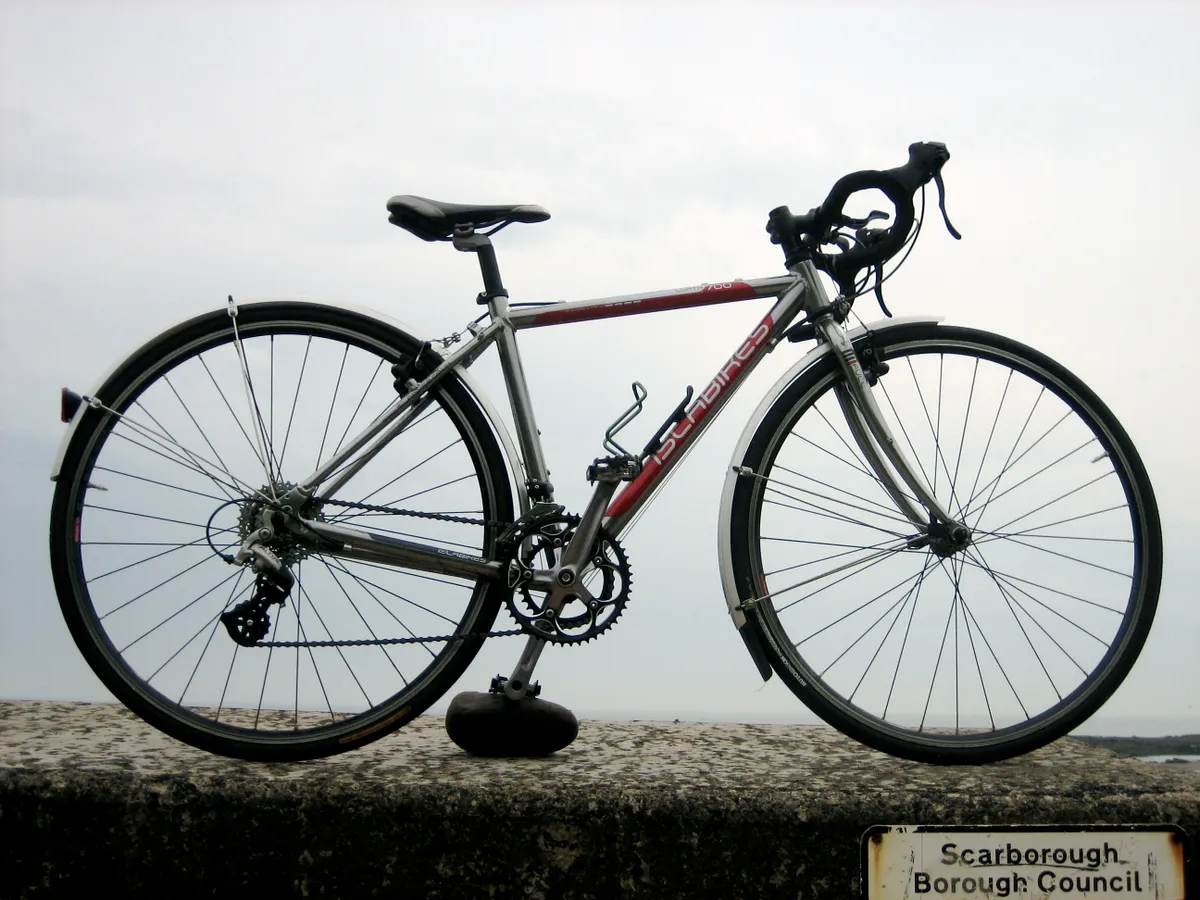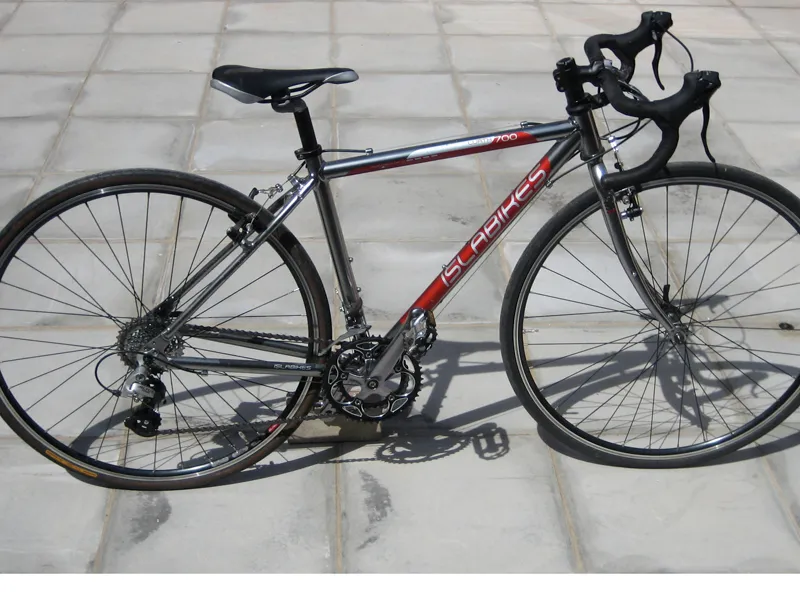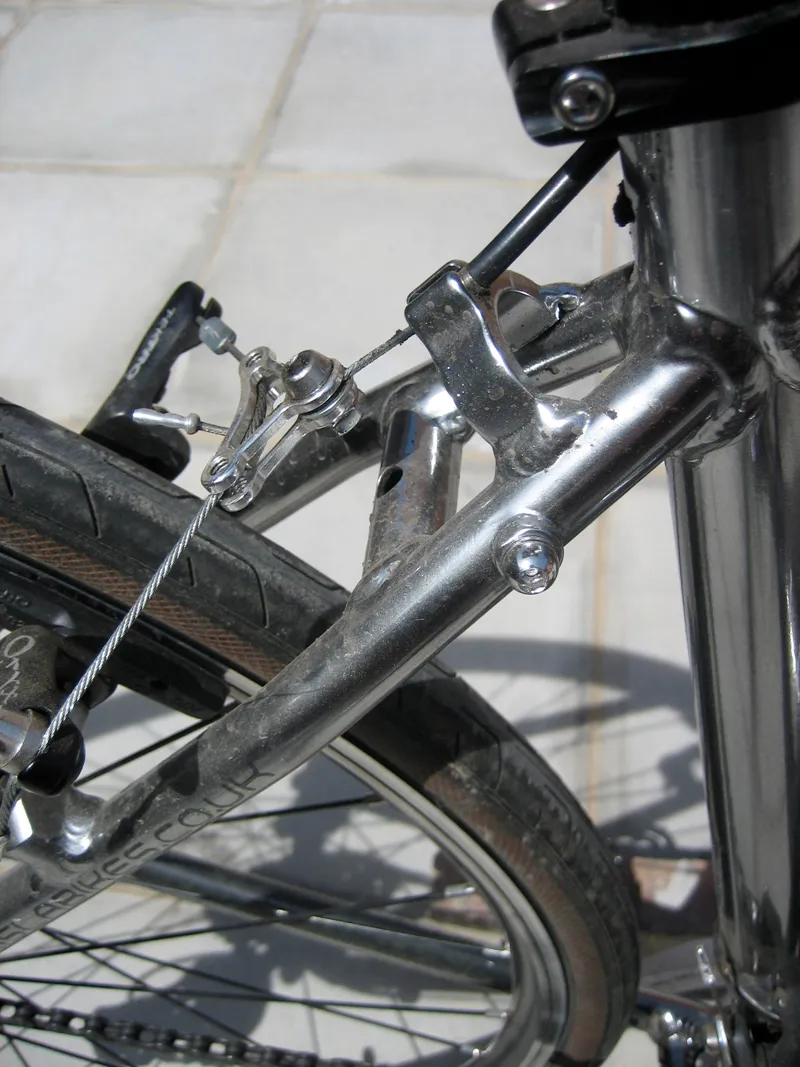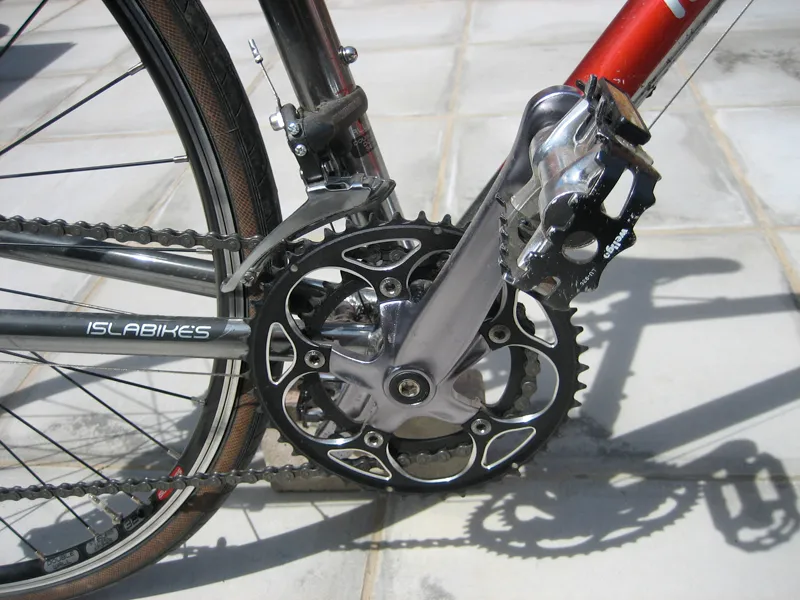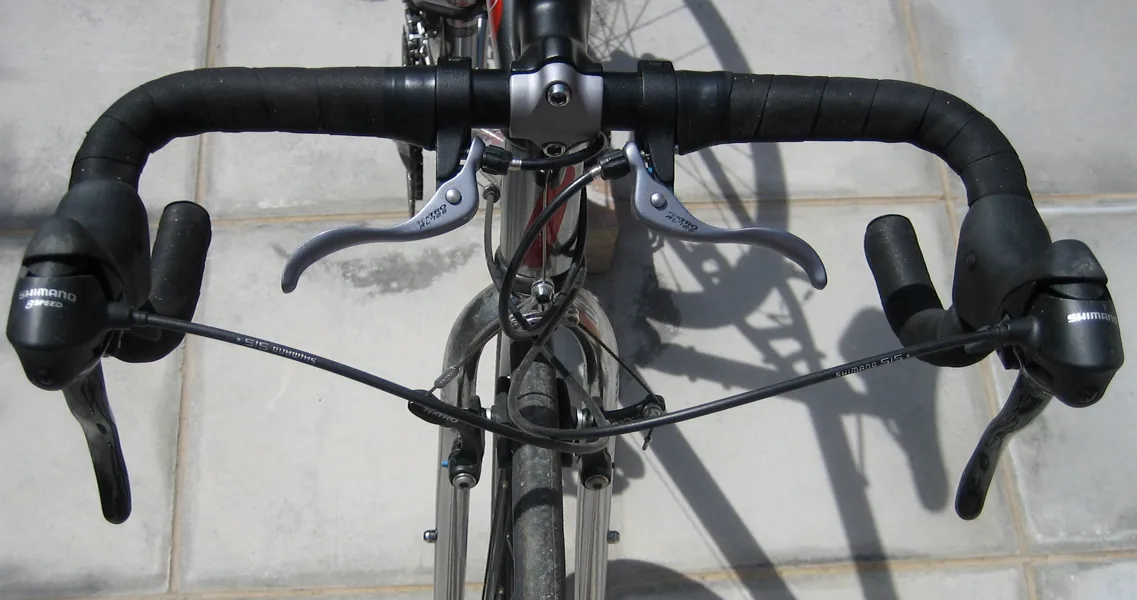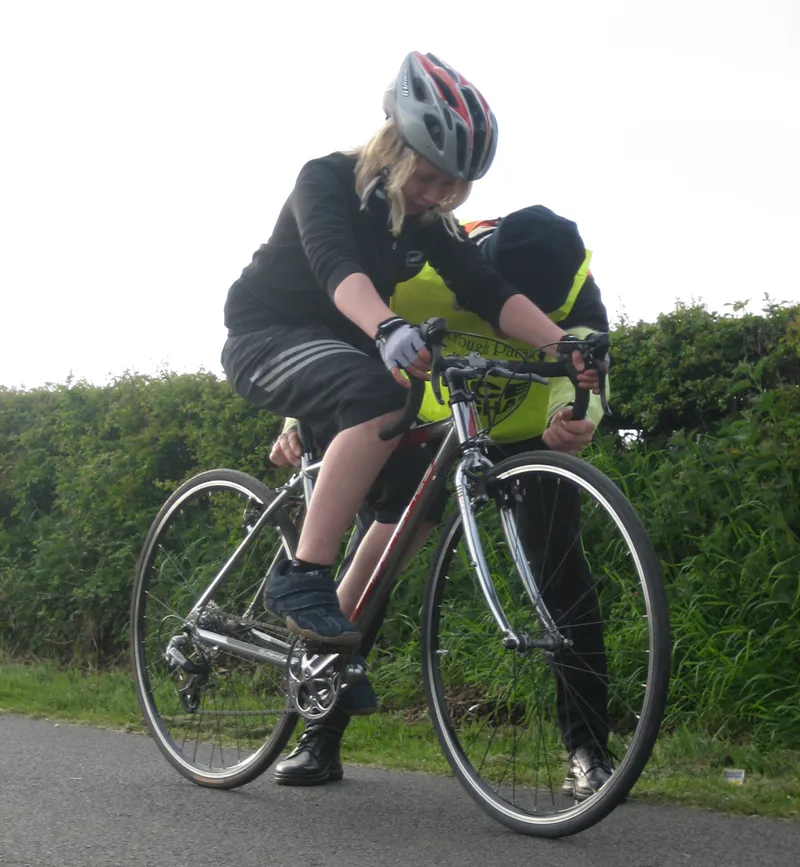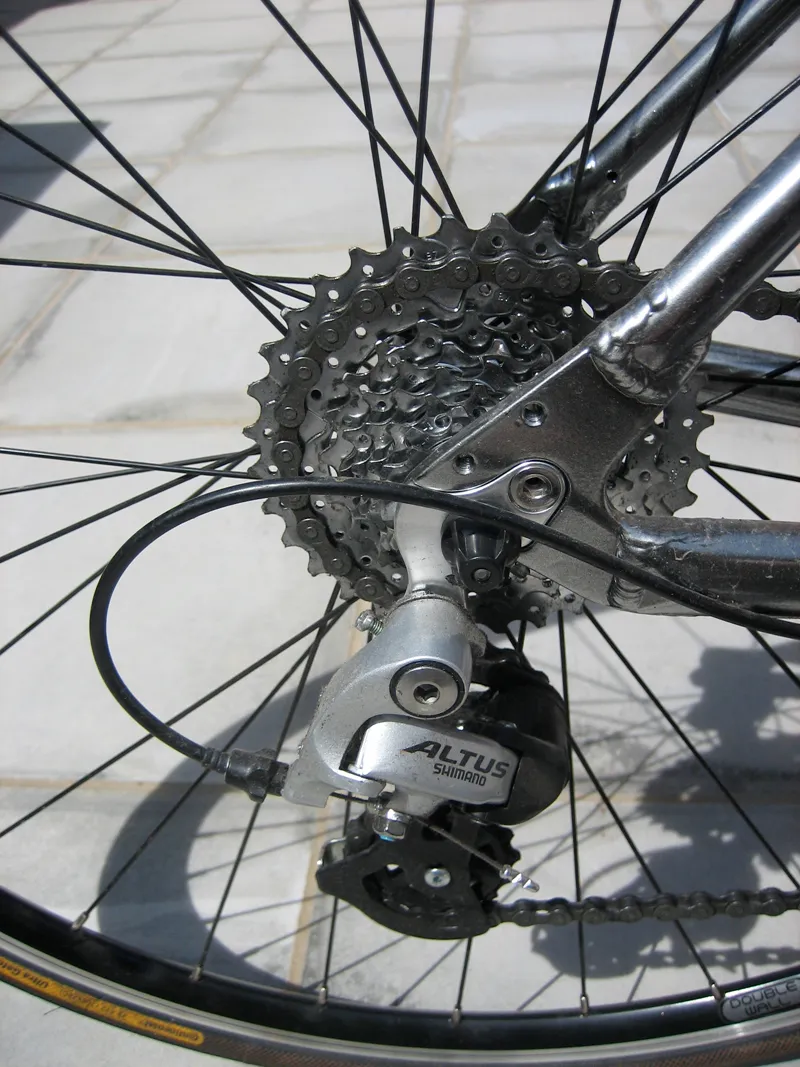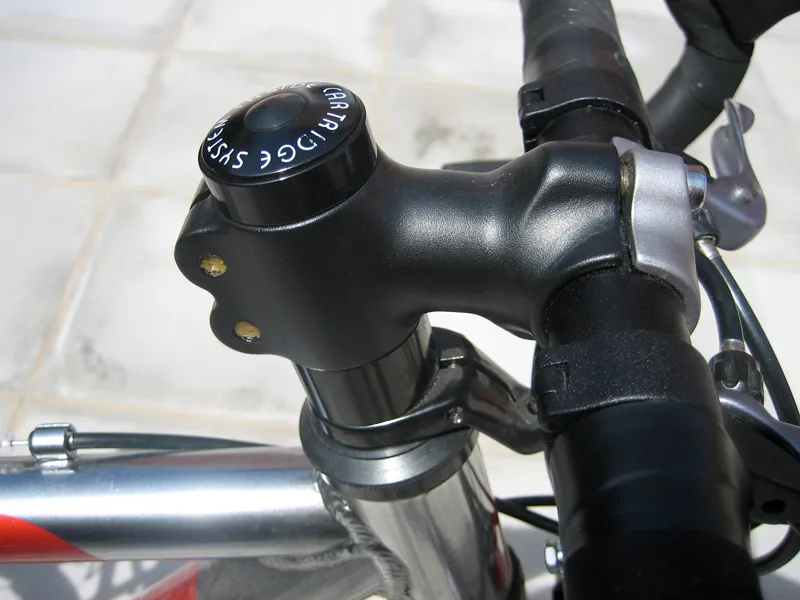Good kids' bikes are hard to find, great ones are rare still. The build quality and thoughtful design of the Luath makes it a truly great kids' bike that's versatile enough to use for touring, beginning racing or just riding with Mum & Dad.
If you had to have one bike for all your riding, chances are that a cyclo-cross bike would make the shortlist. That’s what this is: a ’cross bike for kids.
Because it also has frame fitments for full-length mudguards and front and rear carrier racks, it’s also a potential tourer or street bike. Or you could swap the tyres and use it for racing on road.
For cash-strapped parents (and let’s face it, money’s always tight when you’ve got kids), this versatility is pure gold. Add one or two sets of spare tyres and some accessories and you’ve got a bike that can be used for anything short of full-on mountain biking.
Ride: ’cross bike versatility & tailor-made for young/pre teens
As an adult, I obviously can’t say first hand how the Luath rides. I’m too big to ride this wearing anything other than clown shoes and a water-squirting lapel flower. But I could observe my sons on it: a small-for-his-age 14 year old and a big-for-his-age 12 year old.
One thing is immediately apparent: it fits bang on. Not just the saddle to pedal distance, but everything else. The reach is right, courtesy of a short 6cm stem. The drops are shallow and short-reach, so a child can get full use of them. The cranks are 160mm instead of an adult’s 170mm. Even the STI levers are reach-adjusted.
This is a bike built for a child, rather than a small frame with adult size components tossed on it by an accountant over-conscious of the bottom line.
My 14 year old happily did 30-mile bridleway rides on the Luath on 35mm ’cross tyres. 700C wheels cope fine with a bit of rough stuff even when the bike is rigid.
This standard size makes swapping tyres easy too. I put 28mm training tyres on for road work – mostly riding to friends’ houses but also for his first time trial.
Frame: Lightweight aluminium with decent clearances
The tube profiles might suggest steel but in fact it’s aluminium. The big tube diameters required by adult bikes to make light-but-weak aluminium sufficiently strong and stiff are not needed.
Smaller frames are stronger anyway – especially double-triangles like this - and children are much, much lighter.
The net result is a bike that’s nice and light despite its modest budget. That’s a real rarity among kids’ bikes, where dire-handing dreadnaughts are common.
The fork is chromoly steel. Like the frame, it’s fitted with the eyelets that you’ll want for accessories; you can ignore them if they’re not needed.
Squeezing 700C wheels into a small frame could have resulted in compromised clearances. Not here. There’s plenty of room for bigger touring tyres and/or mudguards, both under the fork crown/seatstay bridge and between the front centres. Hardly any other off-the-peg drop bar bike for kids offers this.
The rear-facing seat tube slot is a minor drawback for winter ’cross use, but there’s not enough seat tube sticking up above the top tube to put it in front. And if there were, that would limit how low you could put the saddle for smaller riders.
Equipment: wide-range 16-speed STI – sweet
STI shifters have filtered down to Shimano’s 2200 groupset, one below Sora. These operate a drivetrain with a compact double chainset. Like most cyclo-cross and touring bikes this is a mix of road and mountain bike components.
The front mech is also from Shimano’s 2200 road range and shifts the chain across a road-sized, 34/48T compact double.
The rear mech is an off-road Altus but it works fine with a road shifter. The benefit an off-road rear mech brings is that you can use a wider ratio cassette. Road mechs won’t usually cope with anything bigger than a 27-tooth sprocket. Off-road mechs will go up to 34 teeth.
Here you get a 11-32, with a fairly tight spread at the top end and some bailout gears at the bottom end. Gears range from 28 inches right up to a mighty 116in, which won’t see much use even if your child does race, not least because 13 and 14 year olds are restricted to an 80-inch gear on the road or track. Any Shimano-compatible 8-speed cassette would fit, however.
With their thumb-button to shift to smaller sprocket/chainring and a sweep of the lever to go the other way, 2200 shifters are fairly intuitive even if they’re not as elegant as higher-end STI shifters. My sons had no problem with them, and the reduced reach to the levers was welcome.
Braking is made even easier by cyclo-cross style auxiliary levers that can be operated from the bar tops. Unlike old-style extension levers, which (ineffectually) actuated the main brake lever, these act directly on the cable and offer plenty of power.
The brakes themselves are cantilevers, which work better with drop bar levers than the V-brakes you see more commonly on flat-bar bikes and mountain bikes. (V-brakes more cable pull which requires either a cam in the cable to provide, or special levers that in turn require separate gear shifters.) For touring and ’cross use cantilevers provide plenty of stopping power.
Wheels: Adult-strength 700C hoops with your choice of rubber
Despite the small frame size, 700C wheels are used. There’s no toe overlap, however, and the freedom to fit pretty much any tyre you want is a big bonus.
As stock, the Luath 700 comes with 700x35C Maxxis ’cross tyres but for a small premium you can purchase Schwalbe Marathon touring tyres or Continental Ultra Sport race tyres - either instead or as well.
Since my sons already have mountain bikes, I fitted some 28mm training tyres I had lying around.
The wheels are decent: 32-hole aluminium hubs laced to double-wall aluminium rims with stainless steel spokes. They’re sturdy enough for an adult’s weight so should easily endure the rigours of cyclo-cross racing or the extra weight of a touring load when ridden by a child.
The 8-speed set up means you get a freehub at the rear. That’s unusual for a child’s bike, where threaded hubs with screw-on 6- and 7-speed freewheels are common.
A freehub is sturdier than a threaded hub because the drive side bearings are situated closer to the ends of the axle, making a bent or broken axle much less likely.
While children are lighter, they can introduce loads through jumping or hitting kerbs that an adult wouldn’t. Having a cassette hub also means you can upgrade to 9-speed; you’ll need a Sora or better shifter for the back end rather than the 2200 in that case.
The rims have a wear line to indicate when they need replacing, which is useful for a bike that could be in use for many years as it gets handed down from sibling to sibling.
Summary: Top-quality do-everything drop-bar bike for kids aged 11 to 14
Four hundred quid sounds like a lot of money for a kid's bike. But this isn’t just a road bike for junior racing. It will handle any and all drop bar duties, from touring to time trialling, street riding to cyclo-cross – and it’ll do them all well.
If this were an adult bike it would be a great entry-level all-rounder. As a child’s bike, scaled down with an uncommon degree of care, it stands virtually alone.
Taking everything into account, not least the price, this is the perfect drop-bar bike for younger teens and pre-teens. For even younger riders (9+) check out the smaller Luath 26.
